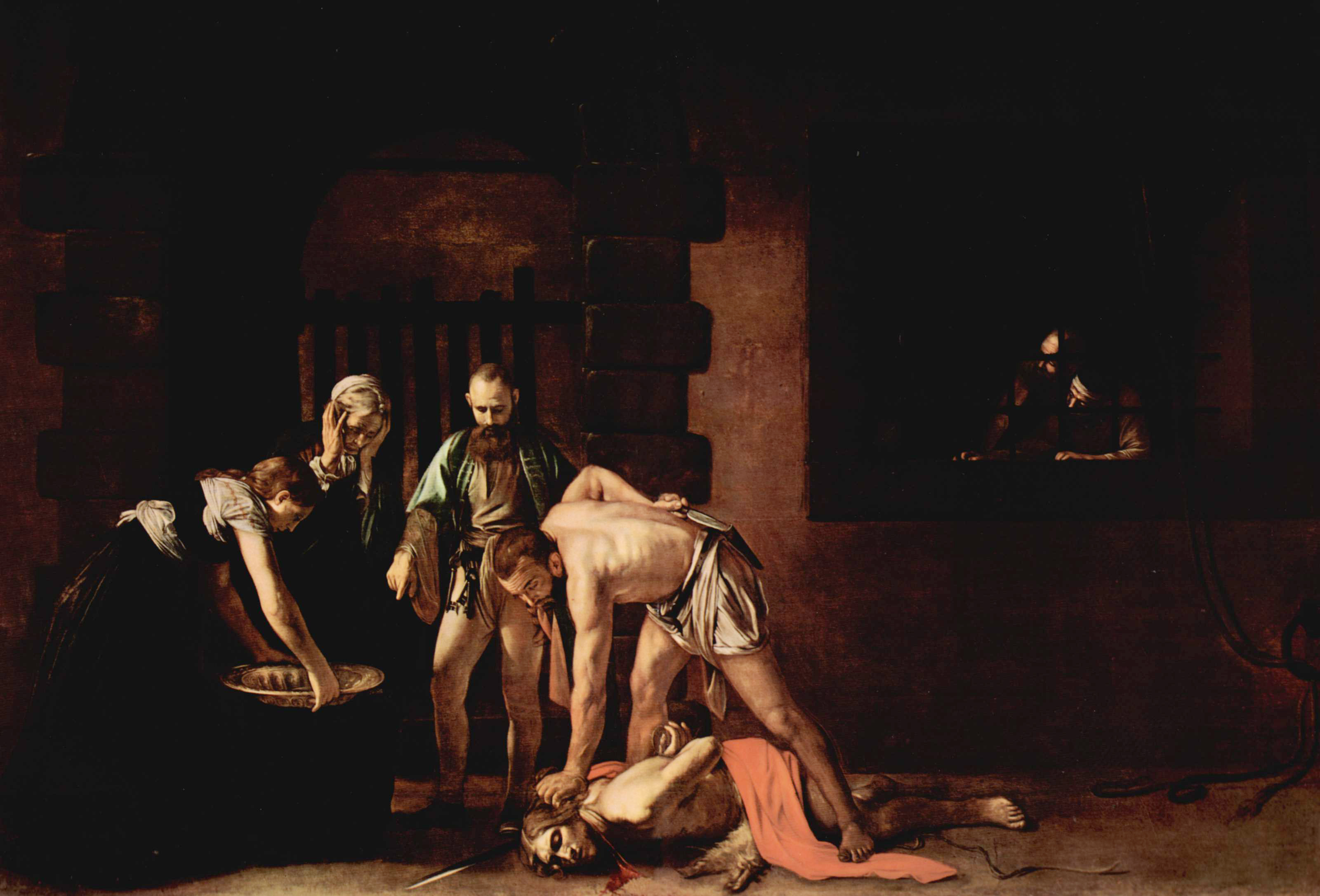One of these painting portraying his baroque technique was The Beheading of Saint John the Baptist, in 1608. In this painting, John the Baptist is being shown to being prepared for execution by beheading. You can see the dagger behind the executioners back and the woman holding the golden plate, ready to receive his decapitated head. What makes this painting so dramatic is the Caravaggio made John the Baptist and the executioner a brighter skin tone than that of the woman waiting to collect his head and the other 3 bystanders, By doing this, he draws attention to the central focus of the painting, John the Baptists execution. It also helps to depict that the beheading was that of the executioners idea, or that he agrees that John should be killed. This is shown by the light on the bystanders faces and the body of the woman collecting the head. The woman collecting the head does not look up from the plate she is holding and keeps her head down, and the bystanders shows incredible disbelief that this was even happening. The woman holding the plate does not look from the floor, showing she feels shameful for allowing this to happen in front of her and becoming a collective part of the beheading with the executioner.
Monday, February 9, 2015
Blog 6
Italian painter Michaelangelo Merisi da Caravaggio was born September 29th, 1571 in Milan, Lombardy. Caravaggio was known for his paintings portraying the emotional and physical human state, and had a great influence in the style of baroque painting. Baroque painting technique can be identified as extreme light a dark contrasts and shadows, which Caravaggio is well known for in many of his paintings. The extreme difference in lighting he used in his paintings created a very dramatic effect, drawing attention to the main focus of the painting, which shocked the people of his time, for they had never seen such work like his. He is known to be one of the greatest painters of the baroque period along with Rembrandt, Rubens, and Velaquez.
Subscribe to:
Post Comments (Atom)


No comments:
Post a Comment